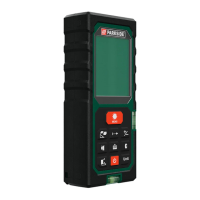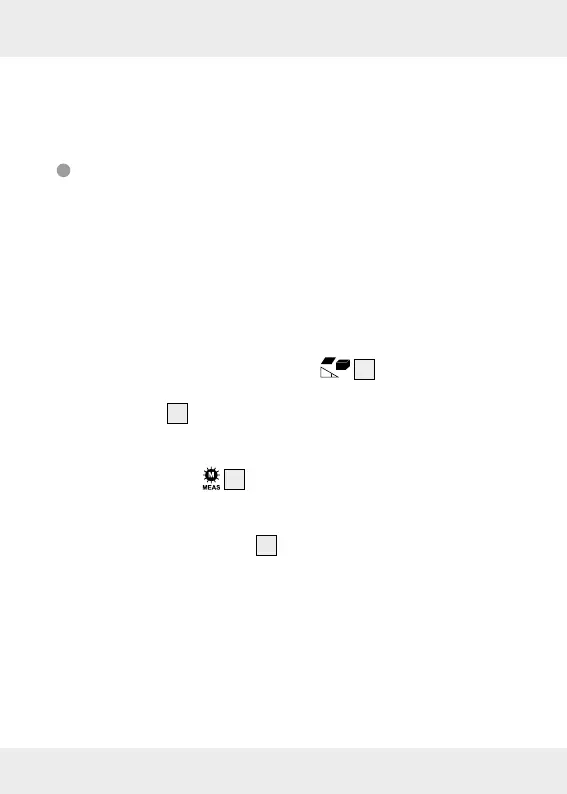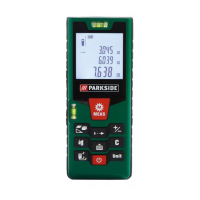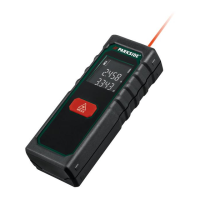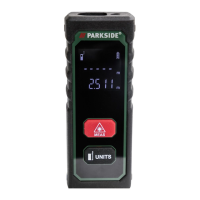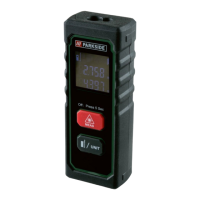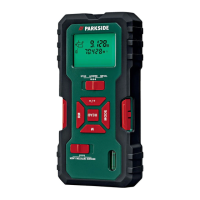22 GB
flashing on the display. Length, width and height will be shown
on the top three rows of the display orderly.
Simple Pythagoras
Pythagoras Theorem describes the dependence of the lengths of
the sides in a right-angled triangle as follows: a² + b² = c², where
a and b are the legs and c the hypotenuse of the triangle. Using
the “Simple Pythagoras“ function, it is possible to calculate the
length of one of the legs. This feature is particularly useful for
poorly accessible measurement points.
1. Press the Function selection button
15
three times. The
“Simple Pythagoras“ triangle icon of measuring mode indica-
tion symbol
25
appears on the display.
2. Now measure the hypotenuse (largest distance) and one of the
legs (shortest distance to the measurement surface) by pressing
the MEAS button
16
. The corresponding line of the “Simple
Pythagoras“ icon flashes for the individual measurement values.
Right after the second measurement, the calculated length is
shown on the bottom row
23
of the display and the correspond-
ing line of the “Simple Pythagoras“ icon stop flashing. The in-
dividual measured values will be shown on the top two rows
of the display.
Note: Please note that angular error (no right angles) will lead to
incorrect results. Ensure that the measured distances lie on a plane
(alignment).
